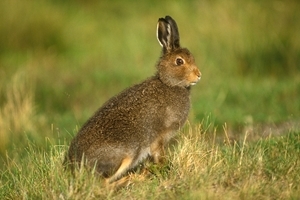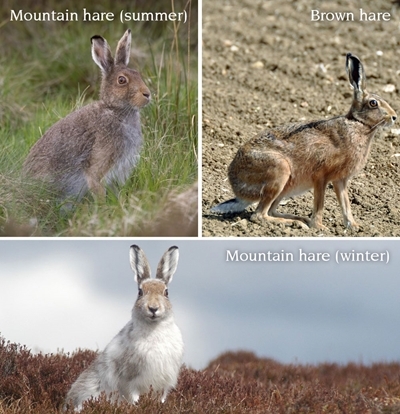Why have a mountain hare survey?
 Mountain hare (Lepus timidus) are considered a species of community interest and are an important part of Scotland’s moorland heritage. The UK government has a legal obligation to ensure the sustainable management of the species. However, in order to make informed decisions on the future management of mountain hares, it is important to obtain current and accurate information on their distribution, how they are managed and why.
Mountain hare (Lepus timidus) are considered a species of community interest and are an important part of Scotland’s moorland heritage. The UK government has a legal obligation to ensure the sustainable management of the species. However, in order to make informed decisions on the future management of mountain hares, it is important to obtain current and accurate information on their distribution, how they are managed and why.
The last comprehensive study on mountain hare distribution was carried out by the Trust ten years ago (find out more about the previous survey here). It is the most important conservation report on the species in recent years, highlighting the key role moorland management for grouse plays in supporting the species.
This is your chance to contribute to updating this report. The GWCT is working in collaboration with the Scottish Gamekeepers Association (SGA) and Scottish Land & Estates (SLE) to update this study. The results of the survey will provide the most up-to-date science to inform on this issue.
SNH Press Release: New research determines the best ways to count Scottish mountain hares >
How do you identify the mountain hare?
 The mountain hare is sometimes known as the ‘blue hare’ because of its blue-grey summer coat, in contrast to the rich-brown fur of the brown hare. The mountain hare’s winter coat is white, while the brown hare’s coat remains brown. Only the brown hare has a black upper surface to the tail.
The mountain hare is sometimes known as the ‘blue hare’ because of its blue-grey summer coat, in contrast to the rich-brown fur of the brown hare. The mountain hare’s winter coat is white, while the brown hare’s coat remains brown. Only the brown hare has a black upper surface to the tail.
The mountain hare is smaller than the brown hare, having a body length of around 50-60 cm, with a more rounded shape. Mountain hares also have shorter ears and legs than the brown hare, although both types of hare have much longer ears and hind legs than rabbits, which are sometimes confused with hares. Rabbits are smaller, and do not have black tips to the ears.